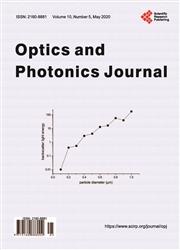The Physics behind the NASA Flyby Anomaly
引用次数: 0
Abstract
From 1990 to 2005 NASA did six flybys of Earth in order to boost the energy of each spacecraft, enabling them to go deeper into the solar system. These six flybys showed an unexpected violation in the conservation of energy of up to 100 sigmas, matching a simple physical formula related to the input and output spacecraft velocities relative to the Earth rotational plane. Mysteriously, occasionally the effect was not present. After several years of reviewing the data and evaluating all sources of perturbation known to NASA, no solution was identified. NASA sent the final report to the author above for further review. Independently, the author’s firm Optical Physics Company had published research into the vacuum field, finding that it was not constant but varied across the Earth’s orbit and was also separately detected being radiated by the Sun. The physics we had learned was applied to the NASA passes, allowing all the anomalies they had encountered to be explained and adding considerably to our understanding of the vacuum field. We hypothesized a radially emitted vacuum field (which controls the rate of time) would couple the radial direction r with time t to add a g tr term in the metric tensor. We then combined the previously published experimental data of the vacuum field radiated by the Sun with the NASA data to develop a formula for the emission of the vacuum field from warm rotating bodies, accurate to about 1%. 25 candidate formulas were evaluated, based on powers of radial acceleration and temperature, and one was definitively selected. This research offers a linkage between the vacuum field whose spectrum is proportional to h and an effect on the metric tensor of gravity. Since both gravity and h control time rates, it seemed credible they could both affect the metric tensor.NASA飞掠异常背后的物理学
从1990年到2005年,美国宇航局进行了六次近地飞行,以提高每个航天器的能量,使它们能够更深入地进入太阳系。这六次飞掠显示了一个意想不到的违反能量守恒高达100西格玛,符合一个简单的物理公式有关的输入和输出速度的航天器相对于地球旋转平面。奇怪的是,有时这种效果并不存在。经过数年的数据审查和对NASA已知的所有扰动来源的评估,没有找到解决方案。NASA将最终报告发送给上述作者进行进一步审查。独立地,作者的公司光学物理公司发表了对真空场的研究,发现它不是恒定的,而是在地球轨道上变化的,并且还被太阳辐射单独检测到。我们所学的物理知识被应用到NASA通行证上,使得他们遇到的所有异常现象都能得到解释,并大大增加了我们对真空场的理解。我们假设一个径向发射的真空场(控制时间的速率)将径向方向r与时间t相耦合,从而在度规张量中添加一个g tr项。然后,我们将之前发表的太阳辐射真空场的实验数据与美国宇航局的数据结合起来,得出了一个公式,用于计算温暖旋转物体的真空场发射,精确到1%左右。基于径向加速度和温度的幂,对25个候选公式进行了评估,最终选择了一个公式。本研究提供了光谱与h成正比的真空场与引力度规张量的影响之间的联系。因为重力和h都控制着时间速率,所以它们都影响度规张量似乎是可信的。
本文章由计算机程序翻译,如有差异,请以英文原文为准。
求助全文
约1分钟内获得全文
求助全文

 求助内容:
求助内容: 应助结果提醒方式:
应助结果提醒方式:


